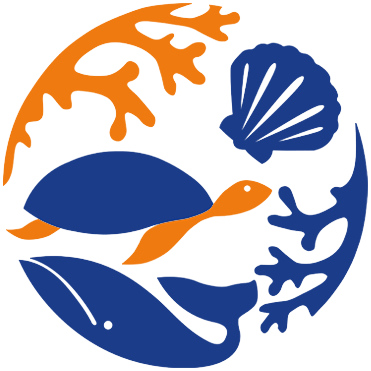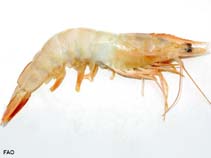Penaeus setiferus (Linnaeus, 1767)
Northern white shrimp
Classification / Names প্রচলিত নাম সমূহ | প্রতিনাম সমূহ | CoL | ITIS | WoRMS
Malacostraca | Decapoda | Penaeidae
Environment: milieu / climate zone / গভীরতার পরিসীমা / distribution range বাস্তুসংস্থান
; ঈষৎ লোনা ; গভীরতার পরিসীমা 0 - 119 m (সূত্র 356). Subtropical, preferred 24°C (সূত্র 107945); 40°N - 18°N, 97°W - 74°W
Distribution দেশ সমূহ | এফ এ ও এলাকাসমূহ | বাস্তুতন্ত্র | দৃষ্টিগোচর | প্রচলন
Western Atlantic: from New Jersey, USA to Yucatan, Mexico.
Length at first maturity / আকৃতি / Weight / Age
পরিপক্কতা : Lm ?, range 17 - ? cm Max length : 22.4 cm TL পুরুষ/ লিঙ্গ অনিধর্ারিত ; (সূত্র 109188); 20 cm TL (female); সর্বোচ্চ উলি্ল্লখিত বয়স : 2.00 বৎসর (সূত্র 109223)
Life cycle and mating behavior পরিপক্কতা | প্রজনন | ডিম ছাড়া | Eggs | ডিম্বধারন ক্ষমতা | Larvae
Main reference
সূত্র সংখ্যা | সমম্বয়কারী | সহযোগী
Holthuis, L.B. 1980 FAO Species Catalogue. Vol. 1. Shrimps and prawns of the world. An annotated catalogue of species of interest to fisheries. FAO Fish. Synop. 125(1):271 p. Rome: FAO. (সূত্র 8)
IUCN Red List Status
(সূত্র 130435: Version 2025-1)
CITES status (সূত্র 108899)
CMS (সূত্র 116361)
Threat to humans
Human uses
মৎস্য: বাণিজ্যিক; এ্যাকুয়াকালচার (জলজ পালন) : পরীক্ষামূলক
FAO - এ্যাকুয়াকালচার (জলজ পালন) : production; মৎস্য: landings, species profile | FishSource | আমাদের চতুর্পাশ্বের সাগর
হাতিয়ার
আরো তথ্য
Max. ages / sizes
Length-weight rel.
Length-length rel.
Length-frequencies
Mass conversion
প্রাচুর্য
ইন্টারনেট সুত্র
BHL | BOLD Systems | CISTI | DiscoverLife | FAO(মৎস্য: species profile; publication : search) | Fishipedia | GenBank (genome, nucleotide) | GloBI | 1 GoMexSI (interaction data) | Google Books | Google Scholar | Google | PubMed | জীবন বৃক্ষ | Wikipedia (Go, অনুসন্ধান ) | জুলজিকাল রেকর্ড



